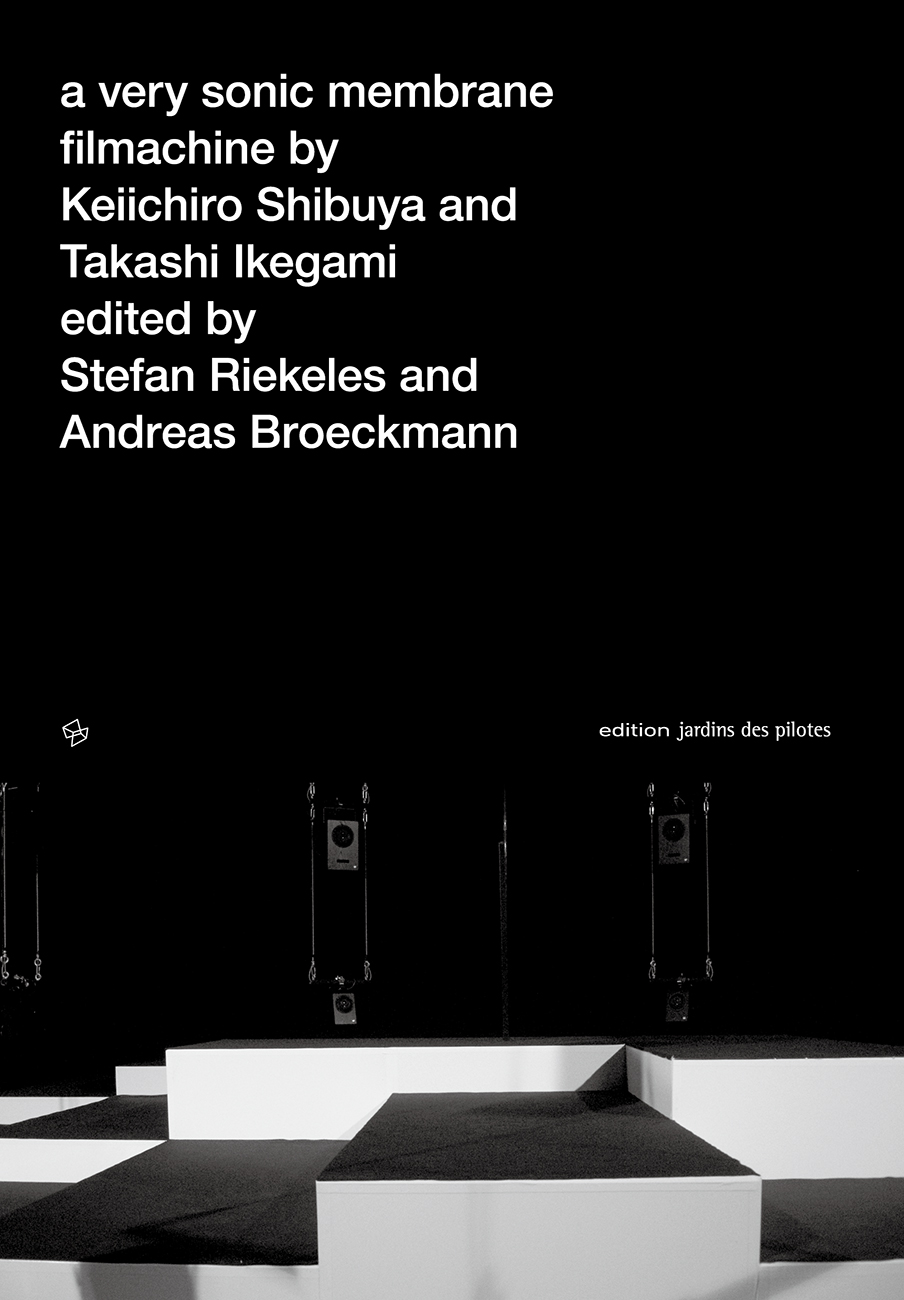ATAK009
a very sonic membrane – filmachine
Keiichiro Shibuya, Takashi Ikegami
This book offers reflections and discussions about ›filmachine‹, a groundbreaking work of art that challenges the way we think of music, sound, and space. filmachine is a vortex of sound and light. It is a sound installation by Japanese composer Keiichiro Shibuya and complex systems scientist Takashi Ikegami. Three circles of loudspeakers are suspended from the ceiling above an abstract landscape. A delicate composition of space and time gives rise to an imaginary aural space in which sound objects and sound membranes are circulating, at times within an intimate proximity, at other times at a great distance.
The essays in this volume offer insights into a unique dialogue between art and science. With contributions by Alva Noë, Otto E. Rössler, Kazunao Abe, Keiichiro Shibuya, Takashi Ikegami, and an introductory essay by Andreas Broeckmann and Stefan Riekeles.
- Contributions by
Alva Noë, Otto E. Rössler, Kazunao Abe, Keiichiro Shibuya, Takashi Ikegami
- Introductory essay by
Andreas Broeckmann and Stefan Riekeles
- Publication
Edition Jardins des Pilotes / diaphanes, Zürich-Berlin

This book offers reflections and discussions about ›filmachine‹, a groundbreaking work of art that challenges the way we think of music, sound, and space. filmachine is a vortex of sound and light. It is a sound installation by Japanese composer Keiichiro Shibuya and complex systems scientist Takashi Ikegami. Three circles of loudspeakers are suspended from the ceiling above an abstract landscape. A delicate composition of space and time gives rise to an imaginary aural space in which sound objects and sound membranes are circulating, at times within an intimate proximity, at other times at a great distance.
The essays in this volume offer insights into a unique dialogue between art and science. With contributions by Alva Noë, Otto E. Rössler, Kazunao Abe, Keiichiro Shibuya, Takashi Ikegami, and an introductory essay by Andreas Broeckmann and Stefan Riekeles.














